
Cell Structure and Function Class 8 Science Chapter 8 as per NCERT Book used in CBSE and other Schools. The lesson covers the complete explanation of class 8 Chapter 8 Cell Structure and Function. Topics covered are cells, discovery of cells, cell shape and size, cell numbers, basic structure of cell, cell organelles and the differences between plant and animal cells. The lesson covers all important questions based on cell structure and function. NCERT solutions to book questions have also been provided for convenience of the students.
| cells | cell structure | nucleus |
| types of cells | cell wall | Difference between plant cell and animal cell |
| cell shape and size | mitochondria | NCERT Book Solutions |
| cell number | endoplasmic reticulum |
The topics we will cover in this chapter are as follows:
- Cells
- Discovery of Cells
- Cell Shape and Size
- Cell Numbers
- Basic Structure of Cell
- Cell Organelles
- Difference between Plant and Animal Cells
All plants and animals (small or large) are made up of same small units that are cells.
Cell Structure and Function Class 8 Video Explanation
Cells

Cells are the basic building blocks of all living things. Cell is a structural and functional unit of living organisms.
Cells may be compared to bricks. Bricks are assembled to make a building. Similarly, cells are assembled to make the body of every organism. All organisms are made up of cells.
All basic chemical and physiological functions of living beings – for example, repair, growth, movement, immunity, communication, and digestion etc are carried out inside the cells.
Discoveries
Who discovered cells?
Answer: Cells were discovered by Robert Hooke. In 1665, the English scientist Robert Hooke observed slices of cork (bark of tree) which is part of bark of a tree, under a simple magnifying device. He noticed partitioned boxes or compartments in the cork slice.
The instrument used to see cells is microscope.
Microscope is an instrument which is used to magnify the very small objects, which cannot be seen with the naked eye. It was discovered by Anton van Leeuwenhoek. The Ancient microscope is the microscope which discover the cell.
Types of cell
There are two types of cell which are as follows:
- Prokaryotic Cells
The cells having nuclear material without nuclear membrane are termed as prokaryotic cells. The organisms with these kinds of cells are called prokaryotes. “Pro” means primitive and “karyon” means nucleus. Examples: bacteria and blue green algae. - Eukaryotic cells
The cells having well organised nucleus with a nuclear membrane are designated as eukaryotic cells. All organisms other than bacteria and blue green algae are called Eukaryotes. “Eu” means true and “karyon” means nucleus.
Cells have Three Basic Characteristics
- Cell Membrane
- Genetic Material
- Metabolic Machinery
Cell Shape and Size
The shape of the cell depends upon its function. The shape of the cell may change or remain same.
For example: The cells which are helpful in protection have different characteristics and similarly the cells involved in circulation have different characteristics.
Different shapes of Cell are as follows:
- Spindle like
- Flat
- Oval
- Irregular
- Disc like
- Round
- Cylindrical
- Cube-like
- Elongated
- Branched
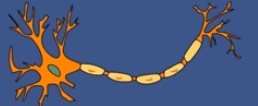
Branched- The nerve cell is branched-shape cell. Nerve cell receives and transfers messages for helping to control and coordinate the working of different parts of the body.
Disc like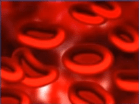
Cells which are in disc-like in shape. For example: RBC (Red blood cells).
Spindle like
These are the cells which are spindle in shape (These type of cells are narrow from ends and wider from middle). For example: Smooth muscle fiber.
Flat
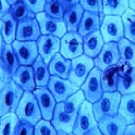
Skin cells are flat.
There are few cells which can change their shape according to their requirement. For example: WBC(White blood count) and Amoeba.
Cell size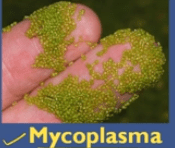
There are different sizes of cells. In animals, the smallest cell size is 0.1 micron and it is present in Mycoplasma.
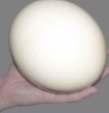
The largest cell is in ostrich egg and it is 17 cm in diameter.
In man, the smallest cell is Red Blood Cell and its size is 6-8 micrometer. The longest cell is nerve cell and its size can be upto 100 microns.
The size of the cells has no relation with the size of the body of the animal or plant.
Cell number
Unicellular: The single celled organisms are called unicellular. For example: Amoeba.
Multicellular: The organisms which have more than one cell are called multi-cellular. For example: Man.
Here is the most important question.
Question: Cells are the basic structural units of living organisms. Explain.
Answer: All the living organisms are made of cells either unicellular or multicellular. The basic functions of life like respiration, assimilation and all major metabolic activities are carried inside the cell. So, cell is known as structural and functional units of living organism.
Cell Structure
Basic cell contains:
1. Cell membrane
The outermost membrane of the cell is called as cell membrane.
2. Protoplasm
Everything that is present in the cell except cell membrane comes under protoplasm. Protoplasm is living material of cell. Or the entire content of living cells including cytoplasm and nucleus is known as protoplasm.
Protoplasm is further divided into two parts:
Cytoplasm
Nucleus
Question: Who discovered nucleus and protoplasm?
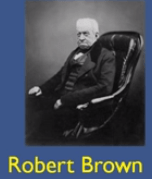

Answer: Nucleus was discovered by Robert Brown.
Protoplasm was discovered by J.E Purkinje.
Cell membrane
The outermost body of the cell is called cell membrane. Cell membrane is made up of lipids and proteins. It is present in both plant and animal. This membrane is living, thin, and delicate. The cell membrane is a semi-permeable membrane, that allows the transmission of a very few molecules across it. The plasma membrane/cell membrane is porous and allows the movement of substances or materials in and out of the cell.
Functions of cell membrane
- Cell membrane provides support to cell.
- It is helpful in exchange of materials.
- It gives shape to the cell.
Cell Wall
It is outer to cell membrane and it is dead and freely permeable (All substances can pass through it)
It is thick layer and present only in cells of plants.
Cell wall is made up of cellulose, but in fungus cell is made up of chitin.
In addition to cell wall, cell membrane is also required by the plants for protection against variations in temperature, high wind speed, atmospheric moisture, etc.
Cells can be observed in the leaf peel of Tradescantia, Elodea or Rhoeo.
Functions of cell wall
- It provides mechanical support to cell.
- It allows all the substances to pass through it.
- It maintains the shape of cell.
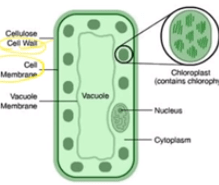
Protoplasm
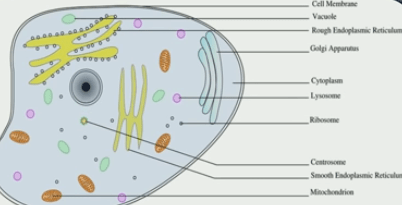
It is the living material of cell.
It is categorized into the following parts:
Cytoplasm
tyle=”font-weight: 400;”>It is the liquid material of cell. It contains organelles.
Or
Cytoplasm is the jelly-like substance present between the cell membrane and the nucleus.
Various other components or organelles of cells are as follows:
Plastids
Mitochondria
Vacuoles
Endoplasmic reticulum: It is present in plants and animals.
Golgi bodies: It is present in plants and animals.
Lysosomes: It is present in plants and animals.
Plastids: They are present only in plants. They are not present in animals.
There are three types of plastids which are as follows:
Leucoplast: It is colorless.
Chromoplast: The chromoplast is colorful.
Chloroplast: The chloroplast is green colored. It is known as kitchen of cells because it helps plant to make food. In order to make food, plant needs chlorophyll which is present in chloroplast. Chloroplast is helpful in photosynthesis.
Chloroplast is double membrane organelle containing stoma and stacked lamalle called Grana. Grana contains green pigment chlorophyll that helps in photosynthesis.
Functions of plastids
Chloroplast is helpful in photosynthesis.
Leucoplast is helpful in store food and fats etc.
Chromoplast is a colored and imparts color to flowers and fruits.
Mitochondria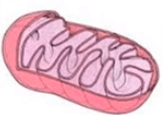
It is known as Powerhouse of the cell. It is rod shaped double membrane. Its outer membrane is porous. Its inner membrane is folded in order to form cristae and contain small bodies oxysomes.
The fluid which is present in mitochondria is called as matrix. Fluid contains DNA (genetic material) and ribosomes.
It is present in plants and animals.
Question: What is the name of the organelle which has its own genetic material (DNA)?
Answer: Mitochondria.
Functions of Mitochondria
In mitochondria breakdown of food occurs and produces energy in chemical form and that is ATP (Adenosine triphosphate).
Question: What is called as power house? Explain?
Answer: Mitochondria is known as power house because breakdown of food occurs in it. It produces energy in chemical form and that is ATP. This ATP is useful in doing various activities. ATP is known as currency of cell.
Vacuole
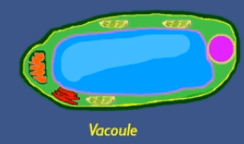
It is fluid filled membrane. It is present in plants. In plant cell, vacuole are large and permanent. The outer membrane of plant cell is called as tonoplast and filled with fluid cell sap. There are chances that they may be present in animals, but their size is very small and are temporary. Vacuoles are present in animals and are used for storage purposes.
Functions of vacuole
It provides turgidity and rigidity.
They are helpful in storing substances.
Endoplasmic Reticulum
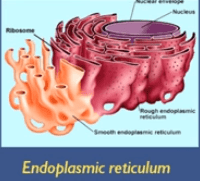
It is a membranous network or irregular network of membrane enclosing fluid in its cavity.
There are two types of ER:
Rough Endoplasmic Reticulum (RER)
Smooth Endoplasmic Reticulum (SER)
Rough Endoplasmic Reticulum: In RER, ribosomes are attached.
Smooth Endoplasmic Reticulum: In SER, ribosomes are not attached.
Functions of Endoplasmic Reticulum
Smooth Endoplasmic Reticulum is helpful in fats or lipids synthesis.
Endoplasmic Reticulum forms skeleton framework of cell. Like Bone and muscles make our body framework. Similarly, ER forms the framework of cell.
Rough Endoplasmic Reticulum has ribosomes and helpful in protein synthesis. RER provides the site for protein synthesis.
Smooth Endoplasmic Reticulum is helpful in detoxification.
Endoplasmic Reticulum is helpful in the formation of membrane of cell.
Golgi Apparatus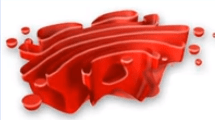
These are stacked membranes or flattened cisternae having fluid filled vesicles.
In plant cell it is called as Dictyosome.
Functions of Golgi Apparatus
They secrete, packages, and dispatches the cellular secretions.
They are helpful in the formation of cell membranes.
Lysosomes
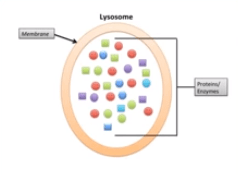
These are membrane bound vesicle containing powerful digestive enzymes.
Functions of lysosomes
They destroy foreign material.
They removed the components which are worn out.
They act as suicidal bags as they can even eat up their own cells if it gets damaged.
Question: What is the name of the organelle that can be called as kitchen of the cell? Explain why it can be called so?
Answer:
Chloroplast is called as kitchen of the cell. The green plastids are better known as the kitchen of the cell because it contains chlorophyll which is used in the process of photosynthesis. Through this process, plant cell prepares food which is ultimately stored in the form of starch.
Question: What is the name the organelle that helps in cell division?
Answer: Centrosome.
Nucleus
It is located in the center of the cell. Nucleus is the storehouse of genes. Without nucleus, cell can neither survive nor shows specialized activities.
It consists of:
Nuclear membrane
Nucleoplasm
Nucleolus
Nuclear material
Nuclear membrane
Nucleus is separated from the cytoplasm by a membrane called nuclear membrane. This membrane is porous (has pores) and allows the movement of materials between the cytoplasm and the inside of the nucleus. It is also called as nuclear envelope.
Nucleoplasm
It is the cytoplasm of nucleus.
Nucleolus
It is the small oval body which is rich in protein and RNA (Ribonucleic acid). Ribosome formation occurs in nucleolus. Ribosome is an organelle which is present in cell and directly or indirectly helpful in survival of cell.
Nuclear material
It contains chromosome and made up of DNA (Deoxyribonucleic acid) and protein. Segments of DNA are called as genes. Genes acts as hereditary vehicles. Later on, it converts into chromosomes.
Chromosomes are ribbon-shaped and made up of DNA and proteins. It has point like structures which are called as genes.
For example: If mother has blue eyes and her daughter also has blue eyes. This is due to hereditary characters. The transfer of character from parents to their offsprings occurs through gene.
Functions of Nucleus
It regulates cell cycle.
It controls metabolic activities.
It contains genes, which are helpful in transmission of characters from parents to offspring.
Difference between Plant and Animal cell
| Plant Cell | Animal Cell |
| 1. Plant cells have a cell wall surrounding the cell membrane | 1. Animal cells only have a membrane. |
| 2. Plant cells contain chloroplasts which are used for photosynthesis. | 2. Absent in animal cell. |
| 3. Plant cells have a large and permanent vacuole (it’s like a fluid sack), compared to an animal cell. | 3. Animal cells have a small and temporary vacuole, compared to a plant cell. |
| 4. Cells in plants are more structured due to the cell wall, and form a lattice like structure which helps with rigidness. | 4.Animal cells are ‘blobby’ |
Question: Write the functions of mitochondria, golgi body and ribosmes.
Answer: Mitochondria: It provides energy to the cell.
Golgi body: It packages, dispatches the cellular secretions.
Ribosomes: It is helpful in protein synthesis.
Question: What are genes? How are they important to organism? What is its function?
Answer:
Thread like structures called chromatin are present inside the nucleus. These threadlike structures condense to form chromosomes during cell division. Chromosomes contains DNA. DNA is our hereditary material and segments of DNA are called genes. Genes contain all the information needed by the cell to function and to reproduce further cells of next generation. So, genes are responsible for inheritance of characters. The function of gene is to transfer hereditary information from parents to their offsprings.
Question: What are the different functions performed by cell membrane?
Answer:
- It separates cells from each other.
- It keeps the cells separated from the surrounding external medium.
- It gives shape and size to the cell.
- It allows movement of selected substances inside and outside the cell.
- It provides support to cell.
Question: What is cytoplasm?
Answer: Cytoplasm is the jelly-like substance present between the cell membrane and the nucleus. Various cell organelles of cells present in the cytoplasm are mitochondria, Golgi bodies, ribosomes, etc
One Word Answers
1. The lowest level of organization of life is called as _____?
Answer: Cellular level
2. Living part of the cell is called as _______?
Answer: Protoplasm
3. Centrosomes are present only in animals or plants?
Answer: Animal Cells
4. All functions of the body are carried out by a single cell?
Answer: Unicellular organism
5. What is the name of the largest cell in our body?
Answer: Nerve Cells
6. What is the name of the smallest cells in our body?
Answer: Red blood cells
7. What is the part of cell that provides shape?
Answer: Cell membrane
8. The powerhouse of the cell is known as ________?
Answer: Mitochondria
9. What is the full form of DNA?
Answer: Deoxyribonucleic Acid
10. The cell wall of a plant is made up of _______?
Answer: Cellulose
11. Food taken in by amoeba is digested in _______?
Answer: Vacuole
Fill in the blanks
- ______ is a spherical body present inside the nucleus.
- The function of receiving and transferring messages is carried out by ______ cells.
- ______ of a non dividing nucleus, condenses in a dividing nucleus to form chromosomes.
- ______ are parts of DNA that are passed from parents to their offsprings.
- ______ is the dense fluid like granular substance of a nucleus.
Answers:
- Nucleolus
- Nerve
- Chromatin
- Genes
- Nucleoplasm
Fill in the blanks :-
- All the life functions take place in the ______ of a cell.
- The nucleus of a cell is surrounded by ______ membrane.
- The process of colouring different parts of a cell is called ______ .
- A group of similar cells that are specialized to perform specific functions is called ______ .
- Kidney shaped cells in plant leaves are called _ _____ cells.
Answer
- Cytoplasm
- Nuclear
- Staining
- Tissue
- Guard
Fill in the blanks :-
- A ______ is the smallest unit of life.
- Chromosomes contain basic hereditary units called ______ .
- ______ is the cell organelle which produces energy by the oxidation of food.
- Chromoplasts provide different ______ to the flowers and fruits.
- Green plastids contain ______ that help in photosynthesis.
Answer
- Cell
- Genes
- Mitochondria
- Colour
- Chlorophyll.
Question: How is cell division important to unicellular and multicellular organisms?
Answer: In unicellular organisms, cell division helps to increase their number (reproduce), while in multicellular organisms cell division is required for growth as well as repair in the body.
Question: What is the name of the chemical which is used to stain human cheek cell?
Answer: Methylene blue
Question: Explain how nucleus of prokaryotic and eukaryotic cells are different from each other?
Answer: In prokaryotic cells there is no well defined nucleus rather it is called a nucleoid. Such nuclear organisation lacks nuclear envelope and nucleolus altogether.
In eukaryotic cells the nucleus is well defined with nuclear membrane, nucleoplasm, nucleolus and chromatin network.
Question: How is a cell wall different from plasma membrane?
Answer: Organisms like plants, fungi and bacteria have an additional outer wall surrounding the plasma membrane. This outer wall is called the cell wall. It is made up of cellulose in plants. It provides protection against temperature variations, changing moisture content, high wind speed, etc.
Plasma membrane or cell membrane is a thin and delicate membrane that forms the outer boundary of the cell. It is made up of fats and proteins.
Question: What are the main postulates of the cell theory ?
Answer: All living organisms are made up of cells. Hence, cells are structural and functional units of living organisms.
All cells are similar in their structure and function but they are not identical.
New cells are formed through division in the pre-existing cells.
Question: What is the difference between unicellular and multicellular organisms? Give their examples.
Answer: Such living organisms in which all life processes for entire organism are performed within a single cell are called unicellular organisms. For example: amoeba, paramecium etc.
Those organisms in which body is made up of more than one cell are known as multicellular organisms. For example: fish, frogs , birds. humans etc.
Write short notes on the following-
Cytoplasm
Nucleus of a cell
Answer: Cytoplasm- It is the jelly-like substance found in between the nucleus and the cell membrane. It contains many cell organelles. Cytoplasm along with nucleus forms the protoplasm.
Nucleus- It is a spherical structure located in the Centre of the cell. It is known as brain of the cell as it controls the activities of cells. It is separated from cytoplasm by a membrane called nuclear membrane.
Question: What is the difference between eukaryotes and prokaryotes?
Answer: Eukaryotes have well-organized nucleus with nuclear membrane while prokaryotes do not have well organized nucleus. Prokaryotic cell is generally smaller in size than eukaryotic cells.
Question: What is the location of chromosomes in a cell? State their function?
Answer: Chromosomes are found in the nucleus of the cell. They carry genes and help in inheritance of characters from the parents to the offspring.
Question: Explain why chloroplasts are found only in plant cells?
Answer: Chloroplast contains chlorophyll which synthesizes food in plants by the process of photosynthesis. No photosynthesis occurs in animals . So, they do not contain chloroplast
NCERT Book Solutions
Indicate whether the following statements are True or False.
a. Unicellular organisms have one celled body.
b. Muscle cells are branched.
c. The basic living unit of an organism is an organ.
d. Amoeba has irregular shape.
Answer:
a. True
b. False
c. False
d. True
Question: What function do nerve cells perform?
Answer: The nerve cells receive and transfer messages (impulses), thereby helping to control and coordinate the working of different parts of the body. Nerves made up of nerve cells take messages from sense organs to the brain. They also take the messages from the brain to the muscles for action.
Question: Which part of the cell contains organelles?
Answer: Cytoplasm which is the jelly like substance present inside the cell contains the cell organelles. Some of these organelles are mitochondria, chloroplasts, Golgi bodies, ribosomes etc.
Question: State the difference between eukaryotes and prokaryotes.
Answer: Prokaryotes: Those organisms whose cells do not have well organized nucleus are called prokaryotes. The nuclear membrane is absent. Examples: Bacteria and Blue Green algae.
Eukaryotes: Those organisms whose cells have well organized nucleus with nuclear membrane are called eukaryotes. The eukaryotic cells are generally larger and have many cell organelles. Examples: All plants and animals including human beings.
Question: Where are chromosomes found in a cell? State their functions.
Answer: Chromosomes are found in the nucleus of the cell. These are thread – like structures. These are seen in the nucleus only when the cell divides. The chromosomes carry genes which control our characters. These chromosomes also help in inheritance that is transfer of characters from the parents to the offspring.
Question: Explain why chloroplasts are found only in plant cells?
Answer: Chloroplasts are the cell organelles found only in plant cells because they are concerned with the process of photosynthesis which takes place in the leaves of green plants. The chloroplasts are present mainly in the leaf cells. They contain the green pigment chlorophyll, which is necessary for the process of photosynthesis.
Write a note on the following-
Shape of the cells
The shape of the cells depends on their functions. The Red Blood Cells are spherical so that they can move easily with the blood in the blood vessels. The nerve cells are elongated like wires to receive and transfer messages between sense organs, brain and muscles.
Cell wall
Cell wall is the outermost covering layer of the plant cells. It gives support to the plant cell. It also protects the cell from changes in the environment like high temperature, high wind speed etc.
Parts of the cell
The cell has three main parts:
The cell membrane
Cytoplasm, which contains smaller components called cell organelles.
The nucleus.
Multiple Choice Questions
1. The powerhouse of cell is called
a) Cell wall
b) Mitochondria
c) Ribosomes
d) Nucleus
2. The kitchen of the cell is called
a) Cell wall
b) Nucleus
c) Vacuoles
d) Plastids
3. The functional unit of life is called
a) Cell
b) Egg
c) Nucleus
d) None of these
4. Chloroplast is found in
a) Plant cell only
b) Animal cell only
c) Both of these
d) None of these
5. The control unit of cell is
a) Nucleus
b) Cell wall
c) Cytoplasm
d) All of these
6. Single celled organisms are called
a) Unicellular
b) Multi-cellular
c) Both of these
d) None of these
7. Tissue is a
a) Group of organs
b) Group of cells
c) Group of tissues
d) Group of organisms
8. Cell is discovered by
a) Robert Brown
b) Robert Hooke
c) John Mendal
d) Charles Darwin
9. The calls capable of changing shapes are
a) Amoeba cell
b) WBC
c) Both of these
d) None of these
10. Hen’s egg is a
a) Tissue
b) Organ
c) Organ system
d) cell
ANSWERS
- b
- d
- a
- a
- a
- a
- b
- b
- c
- d